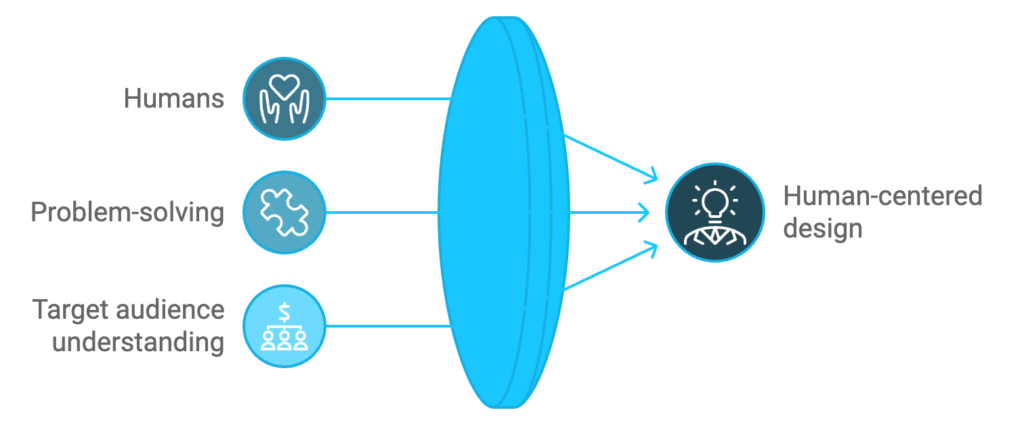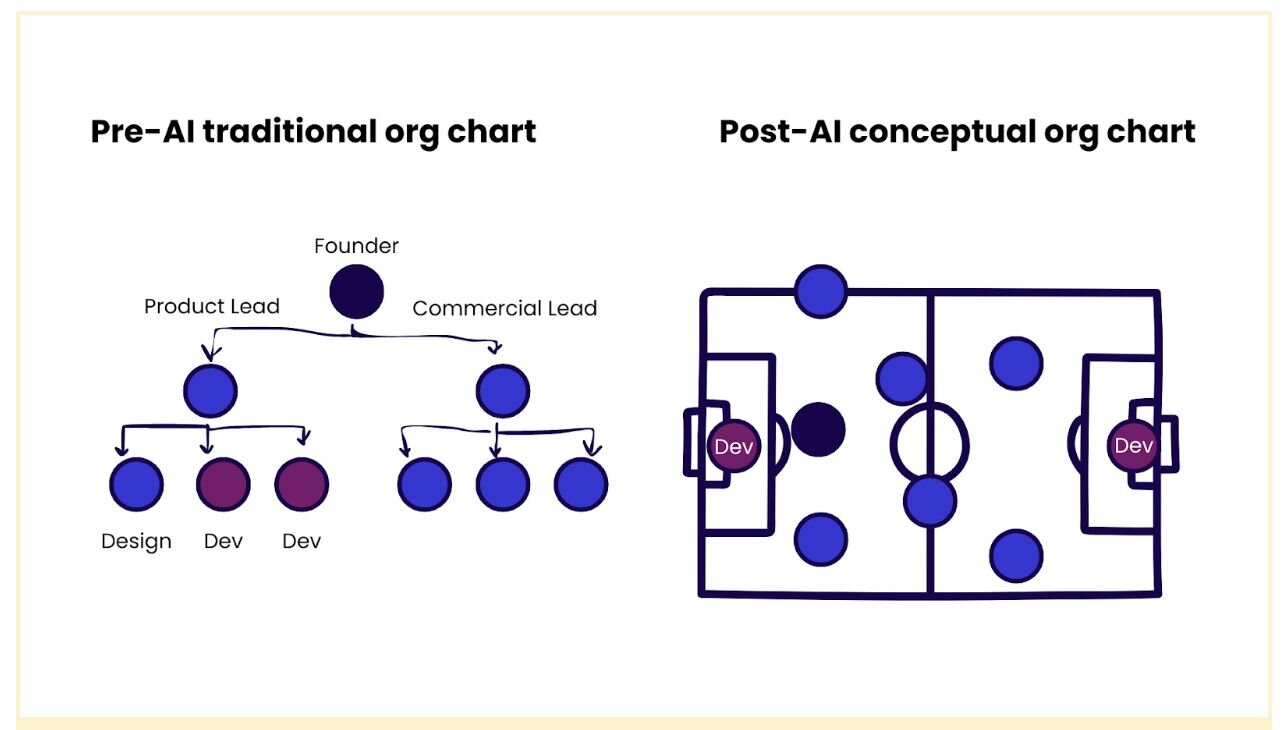Human-centered design (HCD) is becoming more noticeable in the digital technology industry for good reason; it’s effective at driving sales and is popular amongst consumers. I recently spoke about the importance of utilizing human-centered design when designing landing pages, and I wanted to expand on this issue as it’s something that anyone working in our field should come to grips with. Even if you’re not a product designer like myself this is still something you should understand in detail.
Not only is human-centered design, which I will abbreviate as HCD from now on, becoming more prominent; but it is also being combined with another concept that is having a profound impact on digital technology – social proof. Each of these two concepts on its own is a powerful disruptor in the industry; the combination of the two is far more potent. You will be able to significantly improve your designs by using them in tandem with one another.
In this article, I’m going to cover the essentials of both HCD and social proof, how they impact digital technology design, the benefits of using them in combination, and case studies of companies that have used them effectively. I’ve worked as a product designer for nearly a decade, and in all that time, I’ve rarely seen developments that have the greater potential to disrupt, and improve, the industry. Let’s start by covering the basics.
What is HCD?

At its core, HCD is all about placing actual humans at the center of the development process. It’s designed as a problem-solving technique that helps you build products and services that speak to and meet the demands of your target audience.
The Harvard Business School defines HCD design as being a four-stage process, starting with clarifying the pain points of your audience. Then you ideate to create ideas and overcome cognitive fixedness—a mindset in which you consciously or unconsciously assume there’s only one way to interpret or approach a situation.
The third step is to develop solutions based on the aforementioned pain points and ideas that speak to your audience, matching positives and negatives so to speak. Finally, you implement, creating a design based on your research that puts your audience first and foremost in the creation process.
HCD represents the natural evolution of user-friendly design, as the latter concept was always focused on targeting a specific audience rather than taking a broader view of those who might interact with your designs. User-friendly design was sometimes considered to be less emotionally empathic since it mostly concentrates on the physical and physiological ways people engage with a platform. For sure, it would work but it was limited in scope.
That’s why HCD works better; it can successfully target the majority of people who interact with your designs based on human perspective, characteristics, and psychology. It can also provide greater data-driven analysis that you can then use to further improve your platform’s performance. The end result is a more intuitive customer experience that can be used effectively by almost anyone.
What are the benefits of HCD?
So HCD can provide product designers and others with the ability to target wider audiences than was previously possible; is that the only benefit of using this approach? Far from it, using HCD comes with many other benefits. I’ve included some of the most prominent below.
Improved user experience
It might seem obvious but it’s an important point to emphasize; HCD places people at the center of its designs ensuring the user experience is high quality. By understanding the needs of a greater group of people, designers can cast a wide net while still providing a tailored experience. This improves the perception of your brand as an entity whose customers are likely to recommend it to their social network. Remember, up to 86% of customers are willing to pay more for a better user experience.
Greater cost efficiency
HCD-focused systems interact with customers for longer on average periods than their equivalents which provides companies with more opportunities for iterative testing and refinement. This allows you to minimize the risks of expensive redesigns, fixes, and post-launch adjustments. According to the US government’s Digital.gov website, the average cost of fixing an issue after development is up to 100 times more than addressing it during the design phase; now that’s a heavy price any company or product designer could do with avoiding.
Stability and sustainability
HCD is ideal for meeting and adhering to the various diversity, equity, and inclusion (DEI) standards mandated by many governments today. This isn’t just good for inclusivity, it also helps your brand remain sustainable as it works to meet the increasing number and complexity of government legislation that governs digital technology. This also has the beneficial side-effect of increasing trust in your brand too.
What is social proof?
People often mimic the behavior of others when deciding how to act in a certain scenario, from busy parties they’re uncomfortable with, to when they’re introduced to a new sport. This phenomenon is known as social proof.
Also known as informational social influence, social proof as a term was first used by Robert Cialdini in his 1984 book Influence: Science and Practice. The central thesis of the book is that humans resort to making decisions based on generalizations in a complicated world where they are inundated with more information than they can process.
The concept is predicated on the idea that those around oneself have a greater understanding of the specific circumstances than you do, and is employed in unclear social settings when people are unable to decide on the proper course of action. In these situations, when people know they need a product or service but can’t choose based on a lack of information, people are often persuaded to purchase a good or service through social proof. This occurs when someone searches for a product, discovers a lot of comparable goods, and decides to purchase one item due to the large number of favorable customer reviews.
In the digital technology industry, social proof represents an evolution of word-of-mouth marketing, which relies on people sharing their opinions, experiences, or information about a product, brand, or service with others. In many ways, it’s almost exactly the same; however, word of mouth tends to spread primarily within pre-existing social groups. Social proof, on the other hand, can spread more organically between individuals who do not know each other personally.
What are the benefits of social proof?
Social proof allows companies to increase their brand recognition and legitimacy, and much more besides. That’s why it’s a good idea for you to use it when creating products for digital technology; it provides a 'real-world’ feeling of legitimacy for products and services, and fosters a sense of trust.
Increased brand legitimacy
According to a survey by BrightLocal up to 87% of consumers read online reviews for local businesses, and 79% trust online reviews as much as personal recommendations. Trust is king, and social-proofed designs help your brand achieve said trust as they prominently display positive reviews and testimonials. This results in consumers responding to evidence as they see it rather than mere advertising, which they are less likely to believe.
User-generated content
When consumers interact with your brand and create content of their own based on their purchases or experiences, you’re getting free advertising. Social proof is perfectly designed to facilitate this. Good reviews that are spread organically will also significantly improve engagement, especially when you help drive this process. When consumers share their positive experiences, respond, and interact, as this will increase their (and your) social proof footprint.
Increased conversion rates
According to a study published by OptinMonster, product pages that feature customer reviews can increase conversions by up to 270%. That’s because social proof significantly alleviates doubt about product legitimacy and provides the reassurance potential buyers need to finalize their purchases. Whether it’s through showcasing customer reviews, testimonials, or case studies, brands can leverage social proof to turn browsers into buyers.
How do you combine HCD with social proof?
Combining these two concepts is not as difficult as you might think, especially if you place yourself firmly in the average consumer’s perspective. Just think about what you want to see from a website or landing page design, imagine how you would describe the ideal customer experience, and consider how said experience could best be shared amongst your social network. The rest will follow from there but this is just the first step, and when creating things like landing pages, I tend to do the following:
- Prioritize accessibility when creating an HCD design as the benefits are many and the drawbacks are essentially zero. Good accessibility is popular amongst consumers, and a particularly well-designed product is likely to be shared and well-reviewed.
- Create plenty of opportunities for customers to leave reviews of your products, and make sure the company’s social media pages are deeply integrated into your designs. This makes it easy for your audience to share their thoughts and create content.
- People want to read reviews that appear to be independent, so you should consider integrating customer feedback from external websites into your designs too. You can try linking this to your social media pages as well.
- Make sure you also don’t overload users as they come to visit your platforms. By all means, integrate social media and reviews, but make sure the end product is simple and easy to use. The antithesis of HCD and social proof is unnecessary complication.
Which companies properly use HCD and social proof?
It shouldn’t come as a surprise that some of the digital technology industry’s giants are firm believers in using the combined power of HCD and social proof. If they’re able to use this combination with aplomb then there’s no reason that you can’t learn from their example and implement it in your designs. Some use HCD and social proof in a conventional manner; others might surprise you a bit, highlighting the importance of out-of-the-box thinking.
Take Airbnb, for example. The accommodation company’s design philosophy is deeply rooted in understanding and prioritizing the needs of its users—both hosts and guests. It effectively integrates social proof to build trust and encourage bookings by using user-generated content, such as reviews and ratings, which are prominently displayed on property listings. The end result is a platform that improves user satisfaction and also drives higher engagement and conversion rates.
Then there’s Slack, the corporate messaging service that might not initially spring to mind when thinking about HCD and social due to its focus on business communications, but its design is highly characteristic of both concepts. A key aspect of Slack's HCD approach is its emphasis on minimizing friction in communication, and it also supports numerous integrations with other tools and services, allowing users to centralize their workflows in one place. This works as an aspect of social proof too, and the fact that millions of users worldwide rely on Slack for their daily communication serves as further proof of its social efficacy as well.
HCD Combined with social proof is the future

Combining HCD and social proof in digital technology designs is a great way to stay ahead in the industry, and we can fully expect that more companies will adopt this powerful combination. It works; it’s as simple as that: creating a situation where everyone is a winner, customer and company alike. There are always challenges when implementing a new concept, to be sure, but what’s life without a challenge?
I’ve fully embraced the full potential of HCD and social proof, and you should too; you’ll find in no time at all that your designs will enjoy increased efficacy. After using the information in his article, consider conducting your own research and learn from other examples and case studies. If you still want to learn more, just send me a direct message, and I’ll be happy to help with whatever questions you may have about this and any other topics you have.







